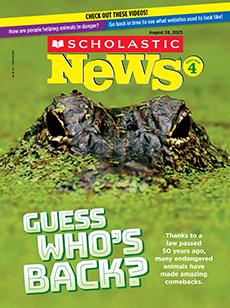Your toothbrush. Your headphones. A bottle of juice or a cereal bar wrapper. You may not realize it, but you probably use or touch plastic dozens of times each day.
You’re not alone. For years, people have sipped from plastic straws and carried groceries in plastic bags. But nearly all the plastic we use gets thrown away. In fact, in the time it takes to read this sentence, Americans will have tossed more than 20,000 pounds of plastic! All that waste is causing big problems for the planet.
That’s why people around the U.S. are working to reduce plastic usage. But will their efforts be enough?
Your toothbrush. Your headphones. A bottle of juice or a cereal bar wrapper. You probably use or touch plastic dozens of times each day. But you may not realize it.
You’re not alone. For years, people have sipped from plastic straws and carried groceries in plastic bags. But nearly all the plastic we use gets thrown away. In fact, in the time it takes to read this sentence, Americans will have tossed more than 20,000 pounds of plastic! All that waste is causing big problems for the planet.
That’s why people around the U.S. are working to reduce plastic usage. But will their efforts be enough?



